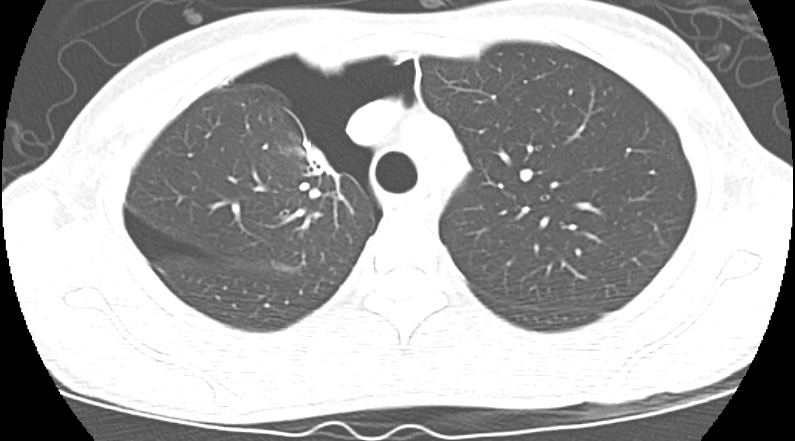Case Presentation: We present a 26-year-old female with history of endometriosis and recurrent tubo-ovarian abscess (TOA). She was admitted for a TOA in 2021, and her course was complicated by a right sided spontaneous pneumothorax. On review, she had experienced two prior episodes of right-sided pneumothorax in 2017 and 2020.The first episode resolved spontaneously; while the second resulted in a video-assisted thoracoscopic surgery (VATS), apical blebectomy and mechanical pleurodesis. Pathology showed benign parenchyma and no histological evidence of thoracic endometriosis. Despite this procedure, she developed another right sided pneumothorax during the admission in 2021. A detailed history revealed that some episodes corresponded to her menstrual cycle. Given her history of recurrent right-sided pneumothorax, relationship to menses, history of endometriosis, and no other explainable etiology, the diagnosis of catamenial pneumothorax was made. Since she had a third pneumothorax after her VATS, she was started on hormonal therapy and has not had any new episodes since.
Discussion: Spontaneous pneumothorax is characterized by the collection of air in the pleural space that occurs without an obvious etiology. Catamenial pneumothorax is often misdiagnosed as spontaneous pneumothorax, particularly since it has been challenging to define a clear age-group or temporal relationship between the pneumothorax episodes and menstruation. Although most seen in women of reproductive age and within 72 hours of the menstrual cycle, the onset of occurrence in case reports has ranged from 10 years of age through post-menopausal females, and the onset ranging from 7 days prior to 7 days following the onset of menstruation.Keeping the differential of catamenial pneumothorax in mind for females with recurrent spontaneous pneumothorax is vital. The etiologies of catamenial pneumothorax are not clearly elucidated, and although pelvic and thoracic endometriosis are the most common causes, they are not universally documented. There are some case reports that suggest that endometrial lesions may be missed during diagnostic workup, especially in the tendinous part of the diaphragm. The workup of spontaneous pneumothorax in women of reproductive age should involve a multidisciplinary team including primary care physicians, pulmonologists, gynecologists and surgeons, both for the diagnosis and management of catamenial pneumothorax.
Conclusions: As demonstrated in this case, the recurrence of catamenial pneumothorax after surgical management is relatively common and has been documented to range between 30-40%. The recurrence rate can be decreased with the use of adjuvant hormonal therapy, such as contraceptives or Gonadotropin Releasing Hormone (GnRH) agonists.

